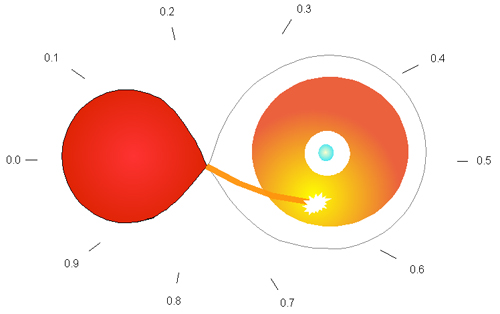Hi Francois
Thanks for the information.
Done some reading, this is where I am right now.
It seems it's a good candidate for a WZ Sge-type dwarf nova, only 4 or 5 is known. SWIFT was looking at it some days ago.
Although I'm little confused, I hope my assumptions is correct.
It should be a very small companion (maybe 0.1 solar mass) very close to the star that starts this, and the collapsed gas falls onto the star and creates bremsstrahlung and synchrotron radiation from the gravitational potential energy?
The energy is released in the UV region and therefore I see a intense blue continuum. This energy heats up the disk(s), (I assume this more complicated because the companion is so close the star) and we see emission.
For this type of dwarf nova I'm not sure we can say it's an accretion disk in the usual shape and size. Some places it's described as ring like and small, whatever that means exactly.
The results I'm getting with the SA is strange from around 6700 Å -the flux seems to rise into the red, could that be the extreme UV radiation from the second order I see so far down into the red? Or just contamination from other stars in the field?
The best source so far I've found for spectre of such very rare superoutburst on WZ Sge dwarf nova's is the this powerpoint. I can't tell how the emission line shows up on SA spectre, but it looks like it should be detectable.
http://www.noao.edu/meetings/wildstars2 ... Nogami.ppt
Well I hope it's clear again tonight, can't wait to get a new fresh look at it.
And yep, I'm saving up for a ALPY
Cheers
Lars
(sorry for the novice questions)




